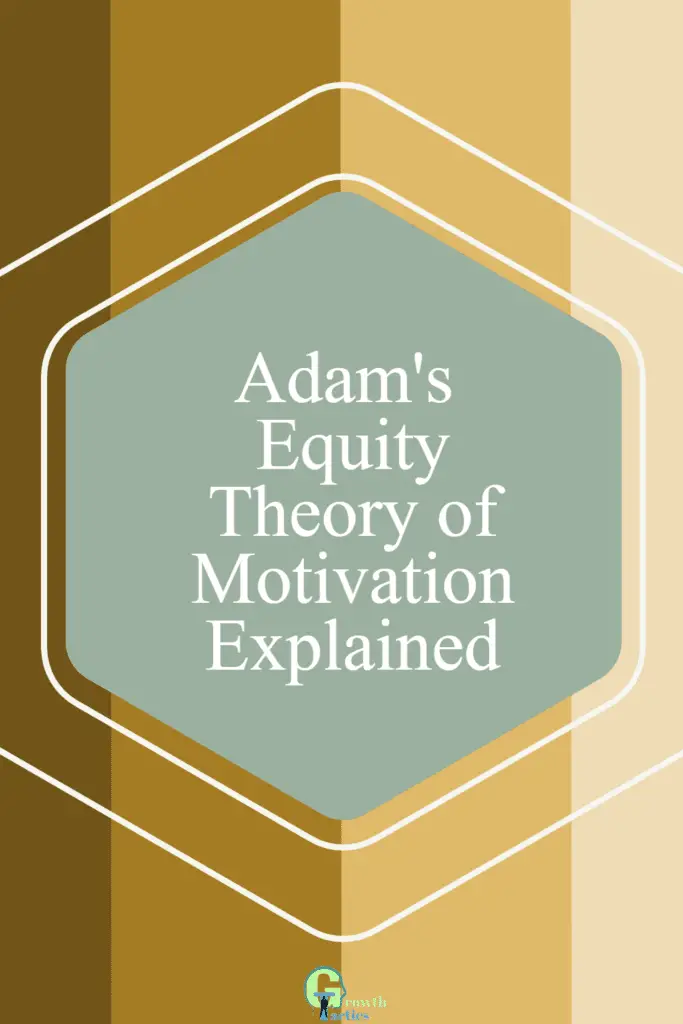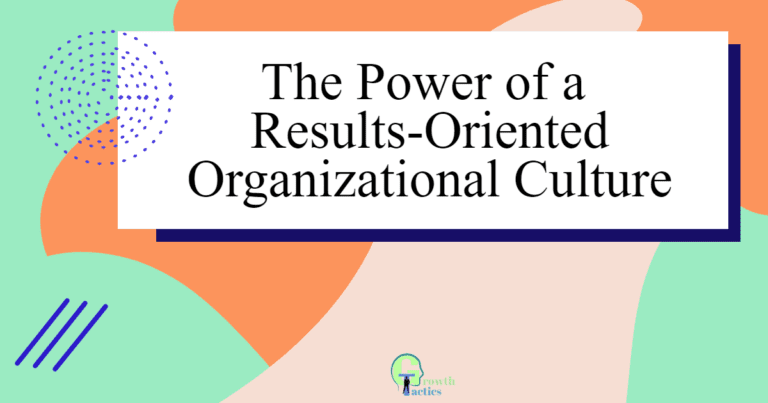The equity theory of motivation, formulated by Stacey Adams, emphasizes the importance of fairness in motivating individuals. Understanding this theory is crucial if you’re a leader or manager who wants to create an environment that fosters motivation and engagement.
Jump To Section
The Basics of Equity Theory of Motivation
At its heart, this theory says we’re motivated when things feel fair. We’re always comparing what we put in (our effort, skills, and time) to what we get out (rewards and recognition). We’re also checking out how this matches up with our coworkers.
I’ve noticed that people often look at their teammates, friends in similar jobs, or even buddies outside work to see how they stack up. It’s human nature to want to be treated fairly.
If you feel shortchanged or even overpaid compared to others, it can really mess with your motivation. I’ve seen great employees lose their drive because they felt undervalued.
Remember, what’s “fair” can look different to different people. It’s not just about cold, hard facts. It’s about how each person sees things.
Equity Theory Examples

To better understand how equity theory operates in real-life scenarios, let’s explore some examples that demonstrate its impact on motivation in various settings.
Example 1: Pay Disparity
Imagine a company where two employees, Sarah and John, hold similar positions and perform equally well. However, Sarah discovers that John receives a significantly higher salary despite their comparable qualifications and job responsibilities. This inequity in pay can lead Sarah to feel demotivated and undervalued, perceiving her efforts as being unfairly rewarded. As a result, Sarah’s motivation may decline, impacting her performance and overall job satisfaction.
Example 2: Promotional Opportunities
In a different organization, Tim and Lisa both work diligently and consistently contribute to their team’s success. However, when the company announces promotions, Lisa realizes that several of her colleagues have been promoted to higher positions while she has been overlooked. Feeling unfairly treated, Lisa’s motivation may decrease, as the lack of upward mobility can make her question the value she brings to the organization. This perceived inequity can negatively impact her performance and job engagement.
Example 3: Recognition and Rewards
Consider a sales team where Jennifer consistently achieves or exceeds her sales targets. Despite her exceptional performance, she notices that her manager primarily recognizes and rewards a different team member, even though their sales results are not as impressive. Jennifer may perceive this as an inequity, feeling undervalued and demotivated. This disparity in recognition and rewards can dampen Jennifer’s motivation and hinder her productivity over time.
These examples underscore the importance of equity theory in understanding employee motivation. When individuals perceive inequity in areas such as pay, promotional opportunities, or recognition, their motivation can suffer. Such instances create frustration, erode trust, and ultimately impact performance and job satisfaction.
Organizations must strive to create an equitable work environment, where employees are treated fairly and rewarded in alignment with their efforts and contributions. By addressing and rectifying any perceived inequities, leaders can enhance motivation, boost employee engagement, and foster a positive and productive workplace culture.
In the next section, we’ll tackle the influence of the referent group in equity theory and how it shapes individual motivation.
The Role of Referent Group
In the equity theory of motivation, the referent group plays a significant role in shaping individuals’ perceptions of fairness and their level of motivation. The referent group consists of individuals whom employees compare themselves with, whether they are coworkers, colleagues in similar roles, or even friends outside of work.
When individuals evaluate their inputs and outputs in relation to others in their referent group, they form judgments about the equity or fairness of their situation. This comparison process influences their motivation levels and can have a profound impact on their job satisfaction and performance.
There are three types of comparison that individuals make within the referent group:
1. Input-Output Comparison
In this type of comparison, individuals assess the ratio of their own inputs (e.g., effort, skills, time) to their outputs (e.g., rewards, recognition, opportunities) and compare it to the ratio of others in their referent group. If they perceive an inequity, either being over-rewarded or under-rewarded, it can have a direct effect on their motivation. This comparison provides individuals with a benchmark to evaluate their own treatment and can influence their level of engagement and effort.
2. Input-Input Comparison
In addition to the input-output comparison, individuals also make comparisons of their inputs with others in their referent group. They assess whether they are contributing at a similar level in terms of effort, skills, or time. If they perceive that they are putting in more effort or resources than others, yet receiving similar outputs, they may feel inequitable treatment. This comparison of inputs can contribute to feelings of inequality and impact motivation.
3. Output-Output Comparison
Individuals may also compare their outputs, such as rewards or recognition, to those of others in their referent group. If they perceive that they are receiving fewer or lesser rewards despite similar efforts, it can elicit feelings of unfairness and lead to reduced motivation. Recognizing discrepancies in outputs can influence individuals’ perceptions of fairness and their overall engagement at work.
By understanding the role of the referent group, managers and leaders can proactively address perceptions of inequity and strive to create a work environment where employees feel fairly treated. Open communication and transparency about reward systems, performance evaluations, and opportunities for growth can help alleviate concerns and foster a sense of fairness among team members.
In the next section, we will explore specific strategies that managers can implement to promote equity and enhance motivation in the workplace.
How to Use this Knowledge
As managers, it is vital to recognize the significance of equity theory in motivating employees and to take proactive steps to ensure fairness within the workplace. Here are some points to consider when applying equity theory principles:
1. Regularly Assess and Adjust Rewards
Periodically review the rewards and recognition systems in your organization to ensure they align with employees’ contributions. Conduct thorough evaluations to identify any discrepancies or inequities and make adjustments as necessary. A fair and transparent reward system will help create a sense of justice and motivation among employees.
2. Communicate Openly
Maintain open lines of communication with your team members to foster transparency. Clearly communicate the criteria used in performance evaluations and how rewards are determined. By providing employees with a clear understanding of the processes, you can minimize misunderstandings and perceptions of inequity.
3. Provide Development Opportunities
Ensure that employees have access to growth and development opportunities. This can include training programs, mentorship initiatives, or individual development plans. Offering equal access to professional development opportunities can enhance employees’ motivation and reduce feelings of inequity.
4. Encourage Collaboration and Teamwork
Promote a collaborative work environment where colleagues can openly share experiences, challenges, and successes. Encourage team members to support and learn from one another, fostering a sense of collective achievement rather than fueling unhealthy competition.
5. Personalize Recognition
Recognize and reward individual achievements and contributions appropriately. Tailor recognition efforts to each employee’s unique strengths and accomplishments. Acknowledging and appreciating employees’ efforts will help foster a sense of fairness and motivate them to maintain high-performance levels.
6. Address Complaints and Concerns
Create a safe and supportive environment where employees feel comfortable expressing their concerns or raising issues related to equity. Establish avenues for employees to voice their grievances and ensure those concerns are effectively addressed and resolved.
7. Lead by Example
As a manager, be mindful of your own behaviors and actions. Exhibit fairness, integrity, and consistency in your decision-making processes. By leading by example and treating employees equitably, you set the tone for a fair and motivating work environment.
By considering these points and incorporating equity theory principles into your management practices, you can foster a workplace culture that values fairness and motivates employees to perform at their best. Remember, a motivated and engaged workforce is a key driver of success for any organization.
Wrapping Up Our Guide to Equity Motivation Theory
In conclusion, Adam’s equity theory of motivation provides a valuable framework for understanding how the perception of fairness influences employee motivation and job satisfaction. By recognizing the significance of the referent group and taking steps to promote equity within the workplace, managers can enhance employees’ motivation and performance levels.
By investing in transparent communication, fair reward systems, and individualized recognition, organizations can create a positive and productive work environment that fosters employee engagement, reduces turnover, and contributes to long-term success.








